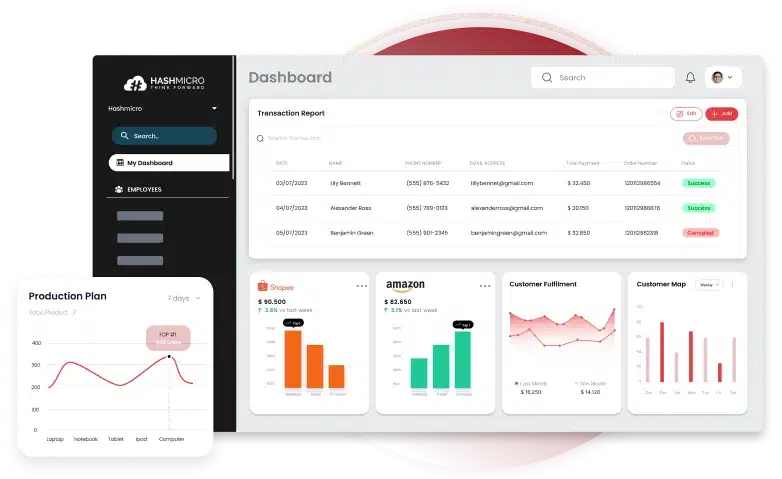Effective asset control is a critical element for any business, yet it’s often overlooked in favor of other priorities. Without effective asset control, businesses risk asset loss, operational inefficiencies, and significant financial damage.
Missing or misplaced assets lead to costly replacements, downtime, and heightened vulnerability to fraud and theft. Therefore, adopting a modern, automated asset control solution can drastically improve operational efficiency.
Companies utilizing these solutions benefit from real-time asset visibility, better decision-making, and reduced manual errors. This article will explain about asset control in detail, from what it is, the benefits, and why using automated system is crucial to managing a company’s assets.
Key Takeaways
|
Table of Content:
Table of Content
What is Asset Control?
Asset control traditionally involved manually tracking company assets, with employees inputting data into spreadsheets, often leading to misplaced items, missed tasks, and poorly maintained assets. This manual process was inefficient and error-prone, especially for businesses with large inventories spread across multiple locations.
Modern asset control solutions have evolved to be cloud-based and automated, reducing the need for manual input. These systems enable businesses to monitor assets in real-time, tracking details such as location, quantity, condition, and ownership.
For example, in industries like construction, where assets frequently move between sites, asset control systems allow businesses to quickly locate and allocate resources, preventing loss, theft, or underutilization.
Beyond tracking, asset control systems help in decision-making by identifying assets that are no longer functional or underutilized, enabling companies to dispose of or reallocate them efficiently.
In short, asset control ensures that all assets are accounted for, properly maintained, and fully utilized, leading to better operational efficiency and reduced costs.
Why Companies Must Implement Asset Control

Below are the key benefits companies experience by implementing an effective asset control strategy:
1. Optimized asset utilization
Maximizing asset use reduces idle time and avoids unnecessary costs. Tracking asset utilization identifies underused resources, enabling better allocation. Monitoring usage prevents overuse and prolongs asset lifespan.
Companies using advanced asset tracking and condition monitoring tools report a 15-20% improvement in asset utilization. Additionally, efficient asset management boosts customer retention—a 5% increase can lead to a 25-95% rise in business.
2. Enhanced asset management
Effective asset management provides real-time data, reducing manual efforts and errors. Automation decreases time spent on inventory checks, while accurate tracking prevents over-purchasing and asset loss.
Organizations leveraging asset management software report a 30% increase in operational efficiency and a 20-30% reduction in maintenance costs due to optimized scheduling and failure prediction.
Asset control improves efficiency by centralizing information, automating maintenance scheduling, and reducing downtime. As a result, there’s to a 30% increase in operational efficiency for businesses using asset management software.
Many businesses have experienced increased efficiency and cost savings with HashMicro’s asset management software. Real-time tracking and automated maintenance scheduling streamline operations effectively.
For those wanting a closer look, HashMicro offers a free demo to help businesses assess how these solutions can optimize their asset management processes.

3. Minimized asset loss and theft
Strong asset audit and control minimizes the risks of asset loss and theft. Automated alerts and secure access controls safeguard valuable assets, while asset audit trails provide historical records to address issues quickly.
Businesses report improved compliance and risk management, with over 60% of companies enhancing these processes through asset management software.
5. Enhanced decision-making
Comprehensive asset data enables informed budgeting, optimized resource allocation, and long-term planning. Asset tracking helps mitigate risks and ensures compliance, supporting better financial planning.
Businesses using asset management software often see a return on investment (ROI) within 12-18 months of implementation, highlighting the strategic advantage of adopting these systems.
How Does Asset Control Work?
An asset control solution integrates systems, processes, and people to ensure assets are efficiently tracked, managed, and maintained. By combining modern technology with established management practices, businesses can achieve real-time visibility into their asset utilization and condition.
Here’s how it functions:
- Asset Identification: Each asset gets a unique identifier, like a barcode or RFID tag, which allows for quick and easy tracking.
- Centralized Data Recording: Information such as acquisition cost, purchase date, location, and maintenance schedules is stored in a digital system for easy reference.
- Labeling for Tracking: Physical assets are marked with labels, ensuring they can be easily scanned and monitored throughout their lifecycle.
- Regular Audits: Periodic inspections confirm that assets are where they should be, in good condition, and the data on them is up-to-date.
- Insightful Reporting: Reports offer a clear picture of asset usage, maintenance status, and overall performance, enabling better decision-making.
- Proactive Maintenance: The system ensures that maintenance tasks are scheduled and completed on time, reducing the risk of unexpected breakdowns and extending asset longevity.
This streamlined approach ensures optimal asset management with minimal effort.
Challenges in Asset Control
Asset control is a crucial part of asset management, but it is often overlooked. Many businesses face challenges in managing their assets effectively. For example, asset misappropriation is a common issue of workplace fraud cases.
Here are some common challenges businesses face in managing assets:
1. Data accuracy
Accurate data is crucial for managing assets effectively. Without it, businesses risk misallocating resources, leading to unnecessary purchases. Proper forecasting helps avoid duplicate assets and ensures resources are allocated correctly.
2. Compliance risks
Businesses must meet regulatory requirements for different types of assets. For example, physical assets need maintenance, and digital assets require software updates. Staying compliant with regulations like HIPAA or GDPR is challenging but can be managed with regular training, efficient systems, and policy reviews.
3. Asset obsolescence
Outdated assets can disrupt operations and lead to costly repairs. Without regular assessments, businesses struggle to predict when assets will lose value. Using obsolete assets can result in legal penalties, making this a financial and regulatory risk that requires careful planning.
How to Implement Asset Control Effectively
Successfully implementing asset control requires more than just technology; it demands a strategic approach that integrates systems, processes, and people. Properly designed fixed asset management strategies also ensure compliance and extend the lifespan of critical assets.
Here are the steps businesses can take to implement asset control effectively:
1. Define clear asset control objectives
Set specific objectives to track, use, and maintain assets effectively. Assign responsibility for each asset to ensure accountability and prevent loss. Focus on maximizing asset usage to avoid downtime.
Use asset tracking tools to improve data accuracy and align practices with regulatory standards. Proper asset lifecycle management ensures assets are fully utilized before disposal.
2. Develop and document control procedures
Create clear procedures for acquiring, maintaining, and disposing of assets. Assign roles for tasks like audits and updates, and ensure documents like purchase orders and maintenance logs are stored centrally. Implement security measures to protect assets and regularly review these procedures to keep them current with new tech and regulations.
3. Train your team on asset control protocols
Ensure your team understands the importance of asset control and how to handle assets. Provide training on the asset management software, teach security protocols, and explain how to conduct audits. Regular training will help reduce errors and keep compliance standards high.
4. Integrate asset control systems into daily operations
Integrate asset control with other business platforms to ensure up-to-date data across departments. Automate tasks like asset tracking and maintenance scheduling to reduce manual errors. Shared access to asset data will enhance communication and scalability as the business grows.
5. Continuously monitor and improve your strategy
Regular audits are essential for verifying asset conditions and usage. Set performance metrics to track the effectiveness of your system and gather staff feedback to identify areas for improvement. Continuous training keeps your team up-to-date with the latest asset control practices.
Overcoming Asset Control with Asset Management System
HashMicro’s asset management software offers a powerful, user-friendly solution that transforms how businesses manage their assets. This system enables companies to stay on top of their assets effortlessly with advanced features that enables real-time comprehensive reporting and status update of each asset.
Partnering with top tech providers and industry leaders, HashMicro ensures cutting-edge capabilities, making asset management a simple, scalable process tailored to any industry’s needs. Whether you’re looking to avoid asset mismanagement, reduce operational downtime, or ensure full regulatory compliance,
HashMicro’s solution helps you take control of your assets with confidence and ease. You’ll save time, cut costs, and boost operational efficiency by leveraging a system trusted by over 1,750 businesses
This system provides useful features to help you control your assets, such as:
- Asset Comprehensive Cost Reporting: Provides a detailed report on asset maintenance costs, which can be used as a basis for future maintenance budget planning.
- Asset Maintenance Budget: This feature helps manage and track maintenance budgets for individual assets or asset groups.
- Preventive Maintenance Scheduling: Enables easy scheduling of planned asset maintenance. This helps prevent unexpected operational disruptions, which ensures assets function optimally.
- Asset Stock Take with Barcode: Tracks asset status using barcode technology. Reports asset status (e.g., operational, broken down, missing, found) directly into the system via barcode scanning.
- Asset GPS Tracking: Accurately and in real-time tracks the geographic location of assets using GPS for full visibility over the company’s assets.
- Parent & Child Asset Management: Organizes assets into a hierarchical structure, consisting of parent (main) and child (sub) assets.
- QR Code Scanning for Facilities Request:This feature enables quick and efficient submission of repair or maintenance requests by scanning QR codes attached to various equipment or facilities.
Conclusion
Asset control is vital for ensuring that your business runs smoothly and efficiently. By leveraging modern technology, companies can track, manage, and maintain their assets with ease. As a result, companies can reap the benefits of reduced costs, and the full utilization of valuable resources.
For Singaporean businesses, HashMicro’s asset management software offers a solution that takes the hassle out of managing assets. With real-time tracking, comprehensive reporting, and automated maintenance scheduling, you gain full control over your assets while saving time and effort.
It’s designed to keep your business running smoothly, ensuring your assets are always optimized and accounted for. Choosing HashMicro means investing in a system trusted by over 1,750 businesses across various industries.
With HashMicro, you can confidently manage your assets, knowing you have the tools to maximize efficiency and drive long-term success. Don’t hesitate and contact the team for a free demo now!


































